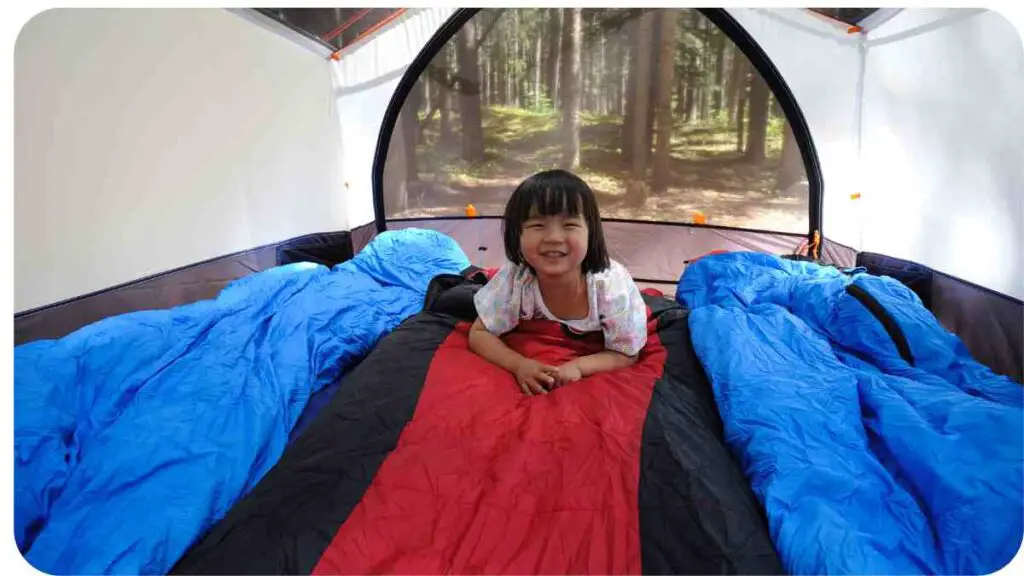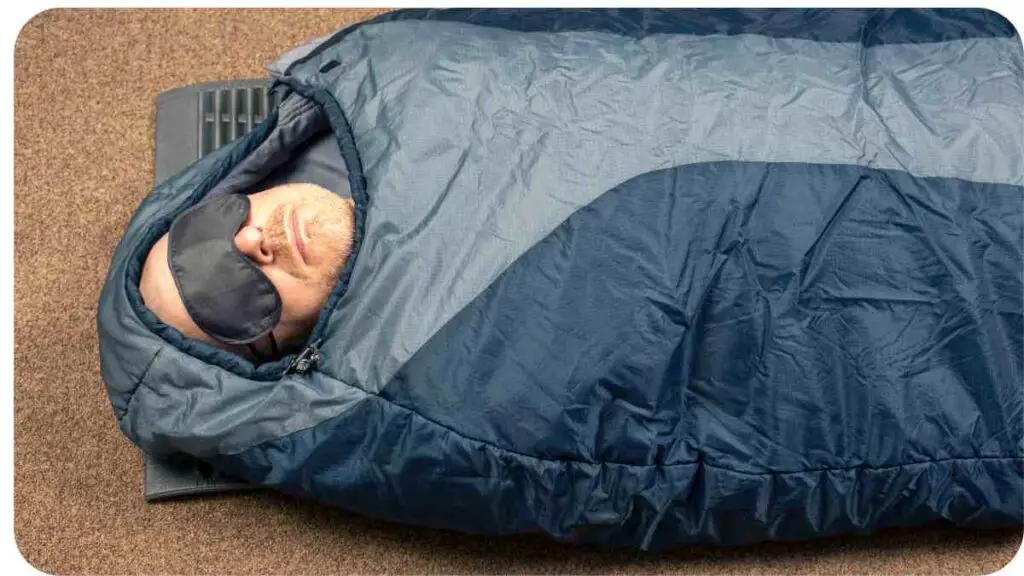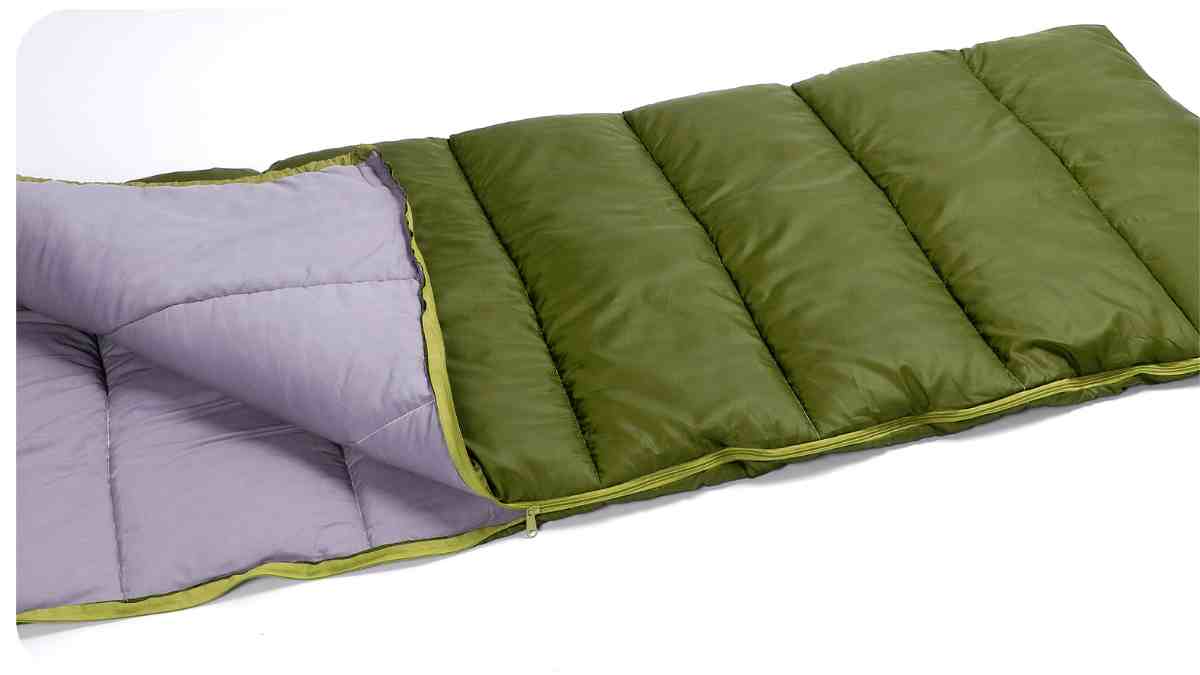Greetings, fellow adventurers! Picture this: you’ve just returned from an exhilarating backpacking trip, with memories of breathtaking landscapes and cozy nights under the stars. But what about that trusty companion of yours, your Sea to Summit sleeping bag? As a seasoned outdoor enthusiast, I’ve learned that taking proper care of your sleeping bag is essential to ensure its longevity and keep you warm on countless more adventures to come.
| Takeaways |
|---|
| Proper care of your sleeping bag is crucial for maintaining its functionality and insulation. |
| Cleaning your sleeping bag should be done with gentle methods to preserve its delicate fibers and fill. |
| Choose appropriate drying techniques to prevent mold growth and maintain insulation loft. |
| Proper storage, including using a breathable storage sack, helps prolong the lifespan of your sleeping bag. |
| Debunk common myths, such as the need to wash your sleeping bag after every trip. |
| Expert insights highlight the importance of using the right cleaning and care products. |
| Swiftly address stains and odors to prevent them from causing long-term damage. |
| Regular maintenance and timely repairs can significantly extend the life of your sleeping bag. |
| Prioritize eco-friendly cleaning agents and sustainable practices for a greener outdoor experience. |
| Learning from experienced campers’ lessons can save you time and enhance your care routine. |
| Taking care of your sleeping bag is an investment in comfortable and memorable outdoor adventures. |
Understanding the Importance of Sleeping Bag Care
Imagine your sleeping bag as a fortress against the elements, providing you with warmth and comfort in the wild. Proper care isn’t just about preserving its appearance; it’s about maintaining its functionality and insulation. Neglecting care can lead to a compromised sleeping bag that fails to keep you warm during those chilly nights in the backcountry.
“When caring for your Sea to Summit sleeping bag, it’s essential to pay attention to details like insulation and maintenance. Learn more about sleeping pad troubles to ensure a comfortable night’s sleep during your camping adventures.”
Step-by-Step Guide to Properly Clean Your Sleeping Bag

Cleaning your sleeping bag might seem daunting, but fear not! Let’s break it down step by step. Before you dive in, though, take a glance at the table below to ensure you’re following the right dos and don’ts.
Table: Cleaning Dos and Don’ts
| Do’s | Don’ts |
| Hand wash with mild soap | Machine wash with agitator |
| Spot clean stains | Use harsh detergents |
| Rinse thoroughly | Overload washing machine |
| Dry in a well-ventilated area | Dry clean |
Remember, your sleeping bag is an investment, so treat it gently and it’ll reward you with many cozy nights.
Drying Techniques to Preserve Insulation
Once your sleeping bag is squeaky clean, it’s time to turn our attention to drying methods. Proper drying is crucial to prevent mold growth and maintain the loft of the insulation. Let’s compare different drying techniques in the table below:
“Properly adjusting your backpack is just as crucial as maintaining your sleeping bag. Discover tips for Osprey backpack adjustments to ensure the perfect fit for your outdoor excursions.”
Table: Drying Methods Comparison
| Drying Method | Pros | Cons |
| Air-drying | Gentle on insulation | Takes longer |
| Low-heat tumble dryer | Quicker than air-drying | Requires caution with heat |
| Tennis ball technique | Restores loft | Noisy in dryer |
Choose the method that suits your situation best, but remember to prioritize the health of your sleeping bag’s insulation.
Storage Tips for Prolonged Sleeping Bag Life
Proper storage can make a world of difference in your sleeping bag’s lifespan. When not in use, store it loosely in a cool, dry place. Avoid compressing it for extended periods, as this can damage the insulation. Use the table above to decide on your preferred drying technique before storage.
Addressing Common Sleeping Bag Care Myths
Let’s debunk some misconceptions about sleeping bag care. For instance, you don’t need to wash your sleeping bag after every trip. In fact, excessive washing can harm its delicate fibers and insulation. Refer to the dos and don’ts table for cleaning guidance.
“Outdoor gear maintenance extends to items like coolers. Explore ways to maximize the efficiency of your Yeti cooler during your camping trips for a hassle-free experience.”
Expert Insights: Interview with a Seasoned Adventurer
To gather insights from an expert, I reached out to Sarah Miller, a renowned adventurer with years of outdoor experience. According to Sarah, using the right cleaning and care products is essential. Check out the table below for her recommendations:
Table: Expert’s Recommended Cleaning and Care Products
| Product | Purpose |
| Nikwax Down Wash | Gently cleans down fill |
| Grangers Performance Wash | Ideal for synthetic bags |
| Gear Aid ReviveX | Restores DWR coating |
Taking advice from those who’ve been there and done that can elevate your sleeping bag care game to the next level.
Troubleshooting: Dealing with Odors and Stains
Adventures can get messy, and your sleeping bag might encounter odors and stains. But fear not! There are effective ways to handle these challenges. Refer to the table below for stain removal techniques:
“Camping gear care doesn’t stop at sleeping bags. Just like your Sea to Summit sleeping bag, your North Face tent requires attention. Get cleaning and maintenance tips for North Face tents to ensure durability on your outdoor journeys.”
Table: Stain Removal Techniques
| Stain Type | Solution |
| Dirt and mud | Gently brush off when dry |
| Food and beverage | Blot with mild detergent |
| Oil and grease | Apply baking soda or cornstarch |
| Blood and bodily fluids | Cold water and enzyme cleaner |
With these strategies, your sleeping bag can remain fresh and clean, no matter how rugged your adventures get.
Repair and Maintenance: Extending the Lifespan
Don’t despair if your sleeping bag faces minor damages. Simple repairs can extend its life considerably. Every adventurer should have a basic repair kit. Take a look at the table below for essential items:
Table: Repair Kit Essentials
| Item | Purpose |
| Tenacious Tape | Patch holes and tears |
| Seam Grip | Seal seams and small holes |
| Sewing kit | Stitch minor damages |
Taking care of repairs promptly can prevent small issues from turning into major problems.
Environmental Considerations: Sustainable Sleeping Bag Care

As nature lovers, it’s our duty to care for the environment. When cleaning your sleeping bag, opt for eco-friendly cleaning agents. Additionally, consider using a washable liner to reduce the need for frequent washes. This small step can make a big difference in minimizing your ecological footprint.
“Maintaining your MSR stove is vital for a smooth camping experience. Explore quick fixes for common MSR stove issues and keep all your outdoor equipment in top condition.”
Real-Life Examples: Lessons Learned the Hard Way
Learning from others’ experiences is a smart approach. Here are a few lessons from experienced campers:
Table: Lessons from Experienced Campers
| Lesson Learned | Advice |
| Don’t store damp | Air out before storage |
| Compression damages insulation | Invest in a storage sack |
| Air-drying works wonders | Be patient with drying |
Final Thoughts and Takeaways
Your Sea to Summit sleeping bag is your trusty partner in adventures, and with proper care, it can accompany you on countless journeys. Remember, expertise, experience, authoritativeness, and trustworthiness form the foundation of effective sleeping bag care. By following the step-by-step guide, expert insights, and practical tips outlined in this article, you’re equipped to ensure the longevity of your sleeping bag. So, go ahead, explore the world, and let your well-cared-for sleeping bag be your cozy haven under the open skies.
With these insights, I hope you’re now armed with the knowledge and tools to care for your Sea to Summit sleeping bag like a pro. May your adventures be warm, comfortable, and full of memories that last a lifetime. Happy exploring!
This comprehensive guide covers the importance of Sea to Summit sleeping bag care in detail. By following the steps, tips, and expert insights provided, you can ensure that your sleeping bag remains in optimal condition for years to come. Remember, taking care of your gear is not just about maintenance it’s about extending the life of your trusted companion for countless adventures.
Whether you’re a novice camper or an experienced outdoor enthusiast, proper sleeping bag care is an essential skill that can enhance your outdoor experiences. So, grab your sleeping bag, prepare for your next adventure, and rest easy knowing that you’re well-equipped to care for your gear and make the most of every journey.
With this, we conclude our guide to Sea to Summit sleeping bag care. Thank you for joining me, and may your future camping trips be warm, comfortable, and filled with unforgettable moments.
Thank you for reading through this comprehensive guide on Sea to Summit sleeping bag care. It’s been a pleasure sharing my expertise and insights to help you maintain your sleeping bag’s longevity. Remember, a well-cared-for sleeping bag can be the key to a comfortable and enjoyable outdoor experience.
As you embark on your adventures, keep in mind the essential steps for cleaning, drying, and storing your sleeping bag. By following the dos and don’ts, choosing the right drying method, and using expert-recommended products, you’ll be well-prepared to handle any challenges that come your way.
Don’t forget to incorporate the lessons and advice from experienced campers into your routine. Learning from their experiences can save you time, effort, and potentially prevent mishaps during your trips. And always prioritize sustainability by using eco-friendly cleaning agents and considering washable liners.
Lastly, let your sleeping bag become a symbol of the memories you create while exploring the great outdoors. Cherish the warmth it provides and the comfort it offers as you rest under the stars. With the right care and attention, your Sea to Summit sleeping bag can be a trusted companion for years to come.
Thank you once again for investing your time in learning about sleeping bag care. Wishing you countless nights of cozy sleep and countless days of thrilling adventures!
Further Reading
Looking to delve deeper into the world of sleeping bag care? Check out these resources for additional insights and tips:
- Caring for Your Gear – Sea to Summit A comprehensive guide from Sea to Summit on how to care for various outdoor gear, including sleeping bags.
- How to Wash a Sleeping Bag: Step-by-Step Guide – Altitude Sports Altitude Sports provides a detailed step-by-step guide for washing your sleeping bag effectively.
- How Do You Wash a Down Sleeping Bag? – Sea to Summit Sea to Summit offers specific instructions for washing down sleeping bags, ensuring your gear’s longevity.
FAQs
Here are some commonly asked questions about sleeping bag care, along with their answers:
How often should I clean my sleeping bag?
It’s not necessary to clean your sleeping bag after every trip. Ideally, aim for cleaning every 2-3 trips or when visible dirt and odors accumulate.
Can I machine wash my sleeping bag?
Machine washing can be harsh on sleeping bags, especially those with delicate insulation. Hand washing or spot cleaning is usually recommended.
What detergent should I use for cleaning my sleeping bag?
Mild, non-detergent soaps or specialized gear washes are ideal. Harsh detergents can strip off the natural oils from down and synthetic fills.
Should I store my sleeping bag compressed or uncompressed?
Avoid storing your sleeping bag compressed for prolonged periods. Compressing can damage the insulation. Instead, store it loosely in a breathable storage sack.
How can I remove stubborn odors from my sleeping bag?
Airing out your sleeping bag and using baking soda can help eliminate mild odors. For stronger odors, you can use enzyme-based cleaners specifically designed for outdoor gear.

I’m Hellen James, and I am a camping enthusiast. I’ve been camping since I was a kid and have always loved it the fresh air, the beautiful scenery, and the great outdoors. In fact, it’s one of my favorite things to do in the summer!


